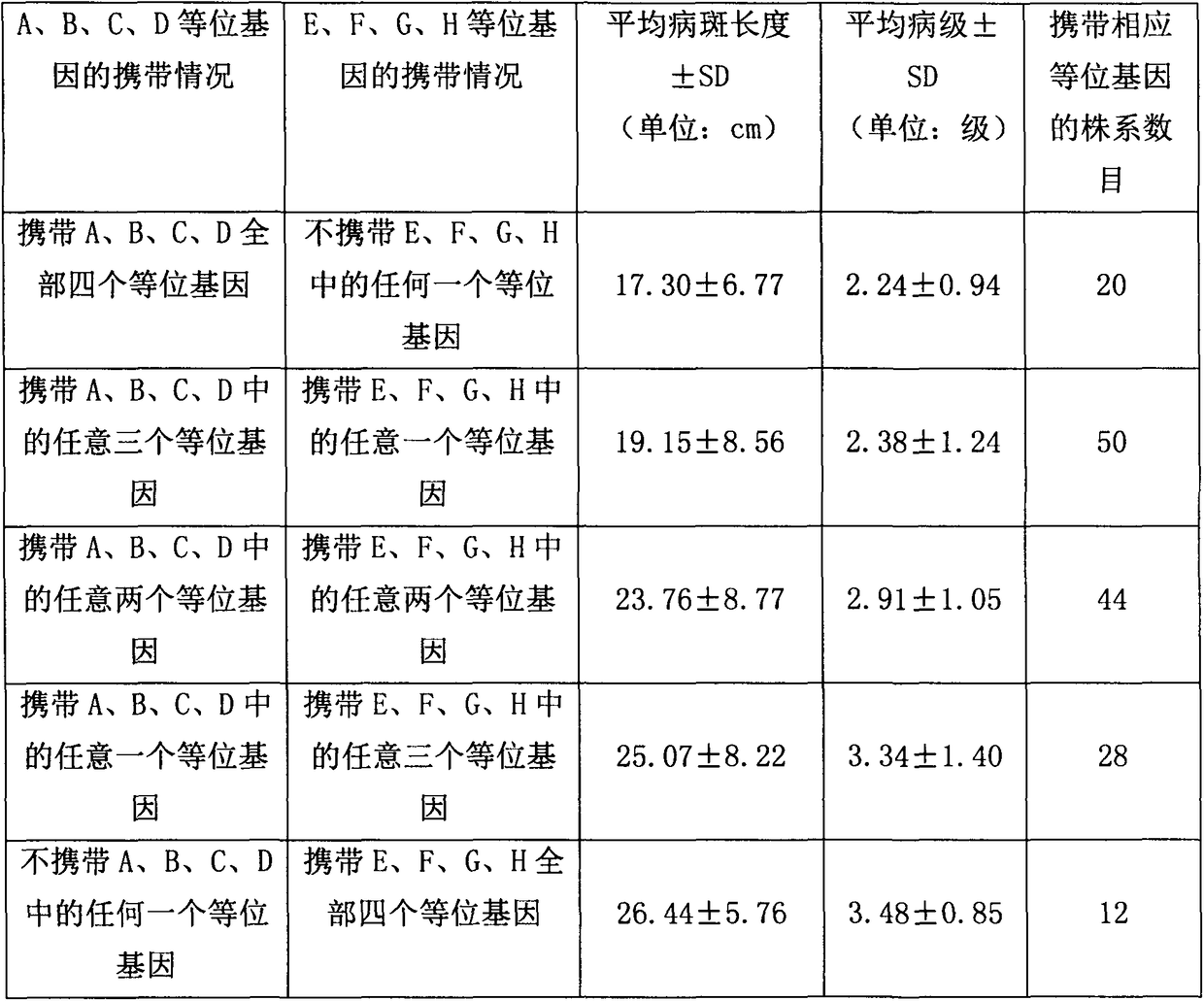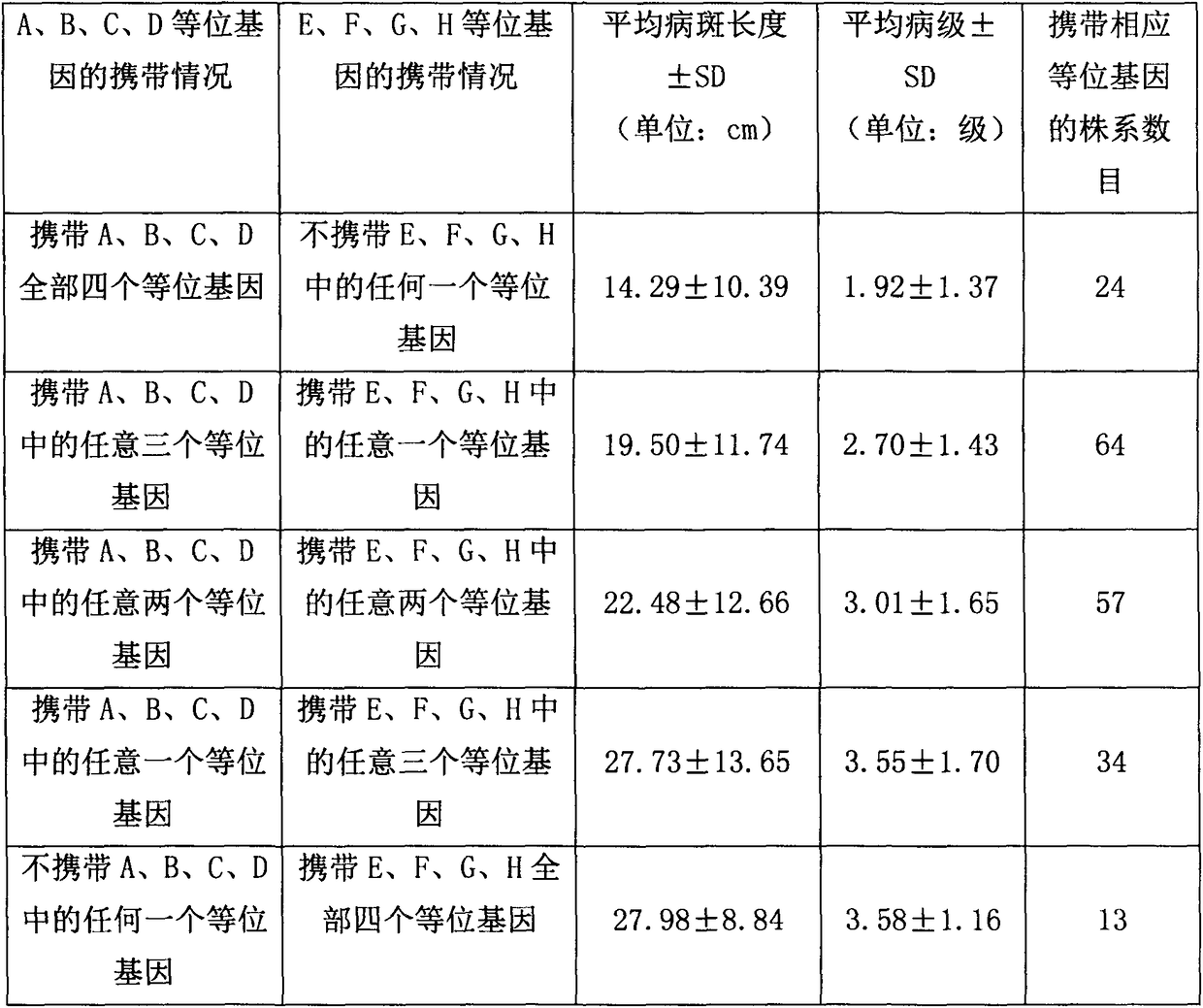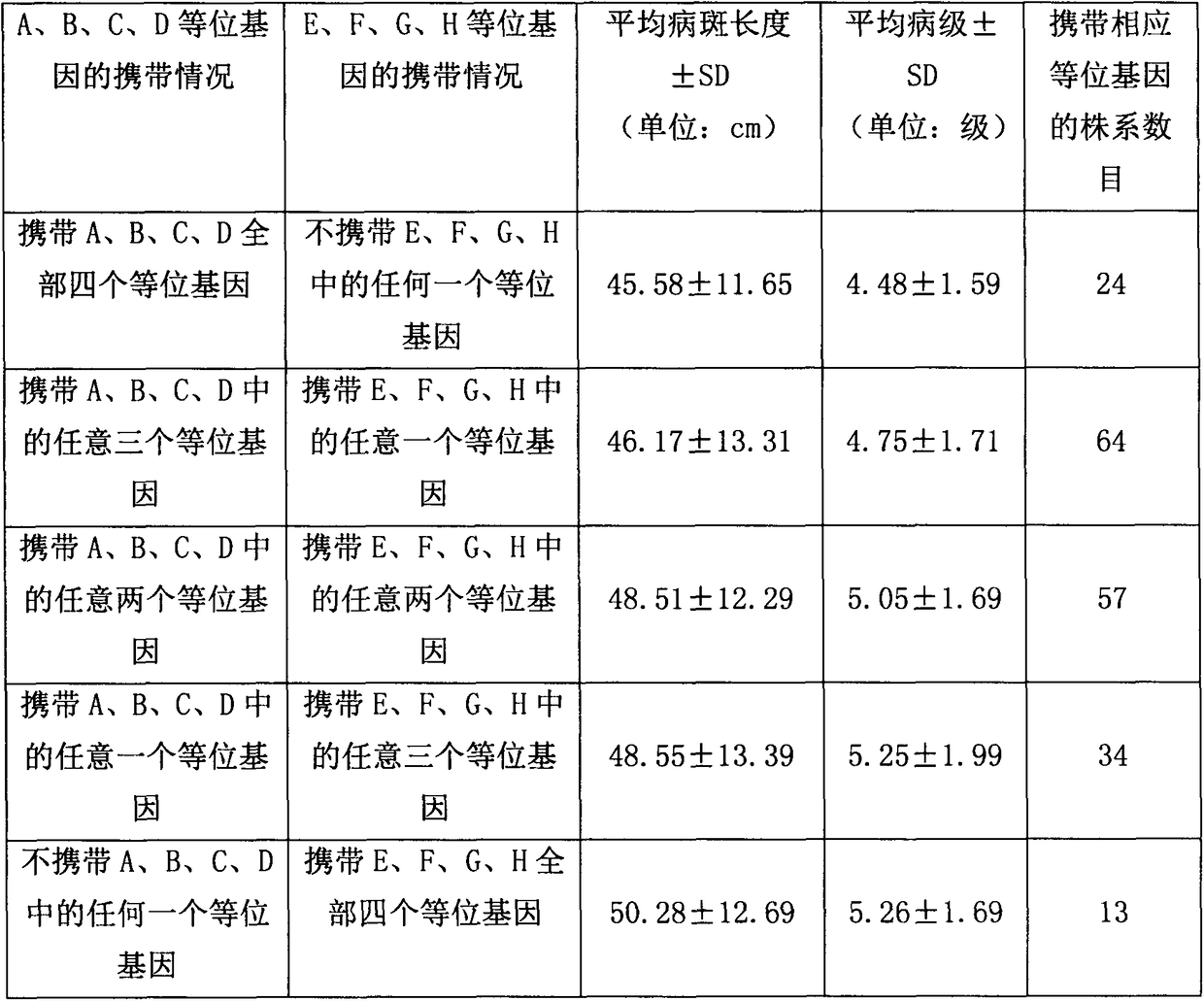Method for using four sheath blight resistance genes of Yangdao 4
A resistance gene, sheath blight technology, applied in the direction of biochemical equipment and methods, microbial measurement/inspection, etc., can solve the problems of reduced and few sheath blight resistance
- Summary
- Abstract
- Description
- Claims
- Application Information
AI Technical Summary
Problems solved by technology
Method used
Image
Examples
Embodiment 1
[0008] Example 1: Application of D715, D804, D948, and RM409 markers in the segregating population of the F6 generation of the hybrid combination of rice variety Lemont and rice variety Yangdao No. 4.
[0009] 1. The rice variety Lemont was used as the female parent, and the rice variety Yangdao No. 4 was used as the male parent to cross and construct the F6 generation segregation population (Lemont is a japonica rice variety from the United States, Yangdao No. 4 is an indica rice variety from Jiangsu, Lemont and Yangdao 4 was provided by the National Rice Germplasm Resource Bank of China Rice Research Institute), this F6 segregation population including 219 lines was sown in May 2013 at the China Rice Research Institute Experimental Field in Fuyang District, Hangzhou.
[0010] 2. Using markers D715, D804, D948, and RM409 to perform PCR detection on each strain in the recombinant inbred strain segregation population of the 219 strains, respectively. The band pattern of D715 ma...
Embodiment 2
[0015] Example 2: Application of D715, D804, D948, and RM409 markers in the segregating population of the F9 generation of the hybrid combination of rice variety Lemont and rice variety Yangdao No. 4.
[0016] 1. The rice variety Lemont was used as the female parent, and the rice variety Yangdao No. 4 was used as the male parent to cross and construct the F9 generation segregation population (Lemont is a japonica rice variety from the United States, Yangdao No. 4 is an indica rice variety from Jiangsu, Lemont and Yangdao 4 was provided by the National Rice Germplasm Resource Bank of China Rice Research Institute), this F9 segregation population including 219 lines was sown in May 2015 at the China Rice Research Institute Experimental Field in Fuyang District, Hangzhou.
[0017] 2. Using markers D715, D804, D948, and RM409 to perform PCR detection on each strain in the recombinant inbred strain segregation population of the 219 strains, respectively. The band pattern of D715 ma...
Embodiment 3
[0022] Example 3: Application of D715, D804, D948, and RM409 markers in the segregating population of the F13 generation of the hybrid combination of rice variety Lemont and rice variety Yangdao 4.
[0023] 1. The rice variety Lemont was used as the female parent, and the rice variety Yangdao No. 4 was used as the male parent to cross and construct the F13 generation segregation population (Lemont is a japonica rice variety from the United States, Yangdao No. 4 is an indica rice variety from Jiangsu, Lemont and Yangdao 4 was provided by the National Rice Germplasm Resource Bank of China Rice Research Institute), this F13 segregation population including 219 lines was sown in May 2017 at the China Rice Research Institute Experimental Field in Fuyang District, Hangzhou.
[0024] 2. Using markers D715, D804, D948, and RM409 to perform PCR detection on each strain in the recombinant inbred strain segregation population of the 219 strains, respectively. The band pattern of D715 mar...
PUM
 Login to View More
Login to View More Abstract
Description
Claims
Application Information
 Login to View More
Login to View More - R&D
- Intellectual Property
- Life Sciences
- Materials
- Tech Scout
- Unparalleled Data Quality
- Higher Quality Content
- 60% Fewer Hallucinations
Browse by: Latest US Patents, China's latest patents, Technical Efficacy Thesaurus, Application Domain, Technology Topic, Popular Technical Reports.
© 2025 PatSnap. All rights reserved.Legal|Privacy policy|Modern Slavery Act Transparency Statement|Sitemap|About US| Contact US: help@patsnap.com



